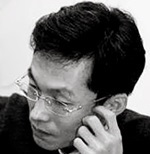
Department of plastic and Reconstructive Surgery, Ilsan Hospital
Dongguk University Medical Center, Gyeonggi-Do, Korea.
Office: http://www.dumc.or.kr/index00.jsp
Personal: http://beautyportal.co.kr
BAPA Website http://bapa.co.kr
When exploring the scientific principles of a beautiful face, we come to discover there are scientific and mathematically quantifiable properties, as well as laws that govern symmetry and regularity of aesthetic units of the face. As important as it is for plastic surgeons to understand and apply these laws to surgery, this may create a problem of the so-called ‘twins born by plastic surgery’. Surgical twins, or recipients of plastic surgery that look very much alike, are caused by narrow and uniform interpretation of what makes a beautiful face.
[Advertisement] ULTRA THIN WALL NEEDLE – Manufacturer: AESPIO(www.aespio.com)
As noted earlier, the trends of aesthetic plastic surgery change almost on a daily basis. The recent trends go beyond just structural and motionless beauty based on mathematical laws but also a more animated appearance involving facial expressions. Past plastic surgeries focused on enhancing the beauty of fixed, stationary appearance and ignored the expressive element. However, the recent trends focus on the beauty of animated and expressive face. For example, today’s popular procedures include a ‘dynamic double fold’9 surgery where the unsightly, craggy line shown when the eyes are closed is streamlined to resemble a natural fold, research on anthropometric rules involved in a beautiful smile10,11, mouth corner lift that improves the facial expression12, and dimple surgery1, etc. This indicates that today’s aesthetic surgical trends are moving away from static beauty to more animated and relation-oriented beauty.
Creation of beautiful clones
Times change but problems arising from the fundamental question ‘What is a beautiful face?’ still remain. Those who receive plastic surgery decide to do so based on internal and external feedback; comparing themselves with celebrities on the mass media, subjective assessment of their flaws seen on the mirror, or negative feedback from other people such as ‘your face is flawed in this and that way’ or ‘if you get some work done on your face you will be prettier', etc. However, the standards of a beautiful or attractive face are develped and generated by the society from a very young age in each of us or are based on certain scientific principles (i.e. a face of balanced, harmonized, and symmetrical aesthetic units with the features in a certain size, angle or ratio).
As the phrase ‘V-line’ is often heard on the mass media, standards of beauty are also influenced by the advertising and mass media (various propaganda on beauty). In other words, the public is subconsciously and repeatedly exposed to the aesthetic properties of certain celebrities thought to be beautiful and soon come to view such physical properties as standards of beauty.14-16 The popularity of new procedures such as paranasal augmentation surgery, youthful face contouring, symmetry correction, V-line surgery, surgery for lowering of lower eyelids, medial and lateral epicanthoplasty, corrective two jaw surgery, surgery for bimaxillary protrusion), and nose tip correction, etc. have been driven by doctors, the public, and mass media. In other words, standards of beauty continue to change from complex interactions between the public and medical specialists.
On the other hand, many young women of Gangnam (trendy part of Seoul) with the same large eyes, a high nose bridge and narrow jaw lines are derogatorily referred to as ‘surgical twins.’ The public looks down on their uniform, mannequin looks. Spread of very narrow definition of beauty ignores the individual balance and harmony of facial features and blindly follows an image of beauty that may have been distorted by prejudices, fads or mass media. In this trend, the plastic surgery becomes passive and conventional, breeding the so-called surgical twins.
Large hospitals with factory-like system have also contributed to the creation of the beautiful clones. However, I believe that this problem has more to do with incorrect understanding of beauty. Precisely, it is caused by the following factors; 1) incongruity of aesthetic standards between the doctor and patient; 2) the doctor or patient’s misconception of beauty; and 3) negative effects of outdated and fixed concepts of beauty. I would like to take a closer look at this here.
-To be continued-




















